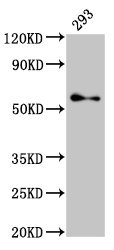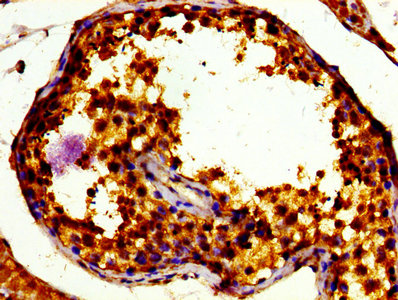Transcription factor that acts as a master regulator of lysosomal biogenesis and immune response. Specifically recognizes and binds E-box sequences (5'-CANNTG-3'); efficient DNA-binding requires dimerization with itself or with another MiT/TFE family member such as TFEB or MITF. Involved in the cellular response to amino acid availability by acting downstream of MTOR: in the presence of nutrients, TFE3 phosphorylation by MTOR promotes its cytosolic retention and subsequent inactivation. Upon starvation or lysosomal stress, inhibition of MTOR induces TFE3 dephosphorylation, resulting in nuclear localization and transcription factor activity. In association with TFEB, activates the expression of CD40L in T-cells, thereby playing a role in T-cell-dependent antibody responses in activated CD4(+) T-cells and thymus-dependent humoral immunity. Specifically recognizes the MUE3 box, a subset of E-boxes, present in the immunoglobulin enhancer. It also binds very well to a USF/MLTF site. May regulate lysosomal positioning in response to nutrient deprivation by promoting the expression of PIP4P1. Acts as a positive regulator of browning of adipose tissue by promoting expression of target genes; mTOR-dependent phosphorylation promotes cytoplasmic retention of TFE3 and inhibits browning of adipose tissue. Maintains the pluripotent state of embryonic stem cells by promoting the expression of genes such as ESRRB; mTOR-dependent nuclear exclusion promotes exit from pluripotency. Required to maintain the naive pluripotent state of hematopoietic stem cell; mTOR-dependent cytoplasmic retention of TFE3 promotes the exit of hematopoietic stem cell from pluripotency.








